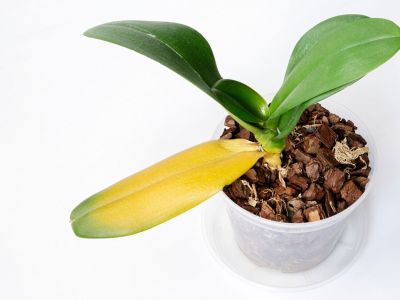Common Orchid Diseases
Orchids come in many sizes, colors, and growth forms. The majority of these wonderful plants in cultivation come from rainforest areas where temperatures are temperate to tropical. There are also species which thrive in arid conditions, but these are not widely grown. Orchid plant diseases are most likely to occur when excess moisture stays on leaves and flowers, and when soil has poor drainage. Cultural changes and even a site transfer can minimize disease as can good sanitation procedures.
Fungal Diseases of Orchids
Black rot is a fungal disease that forms when there is standing water on the orchid. The fungal spores must swim through water and, once ready, will sprout mycelium and begin fruiting. Dark black spots form on foliage and spread quickly through all parts of the plant if left unchecked. Avoid splashing water among your plants and cut out any affected areas with a sterile knife. Root, rhizome and pseudobulb rots are prevalent when potting soil is not sterile and there is excess water. This disease is very contagious and is primarily a root disease, but symptoms may be above the ground. Treating orchid diseases of the roots requires removal of the plant from its medium and using a sterile knife to cut off infected material. Then use a fungicide to drench the roots and clean the growing area with a 10% bleach solution. If enough roots survived, the plant may regain its health. Petal blight and southern blight, or collar rot, are most prevalent when weather is warm and humidity is high. Poor air circulation and good sanitation can help prevent these diseases. Southern blight causes rapid collapse and rotting of roots, pseudobulb, and leaves. Eventually, the disease will girdle the plant and destroy it. Petal blight stems from the fungus Botrytis and produces small black or brown spots on the petals. The flowers will transmit the fungus, so removal of the flower is crucial. Fungicide and sanitation are key to these orchid diseases and treatment. Leaf spots may occur from a variety of organisms. Good sanitation, air circulation, and preventing water on leaves can help prevent these orchid plant diseases.
Bacterial Soft and Brown Rot
Bacterial soft and brown rots are other frequent diseases of orchid plants. The pathogen favors hot, moist conditions and is spread by splashing water on leaves. Leaves develop water-soaked areas often with yellow halos. Quickly, the disease spreads to the roots and pseudobulb. The rotten areas may have an unpleasant odor. In as little as two days, the virus can rot the extremely sensitive Phalaenopsis. In Vanda, the spots become translucent while in Dendrobium, the patches become black and sunken. Use sterile tools to remove infected material. Copper fungicides may be used except on Dendrobium and during flowering or you can use hydrogen peroxide. Simply spray hydrogen peroxide on the plant and any neighboring plants, as the infection can spread quickly.
